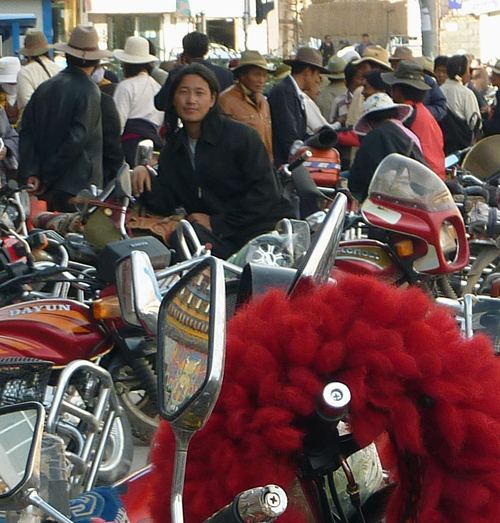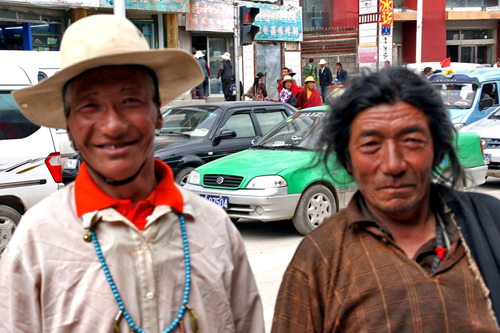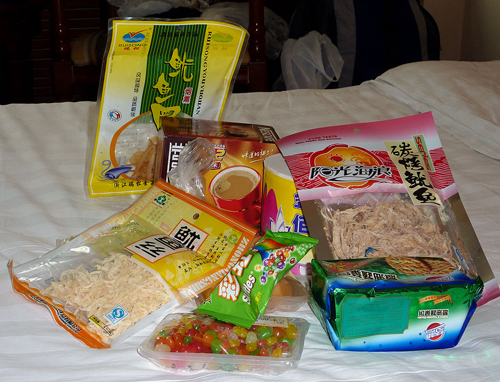Yushu / 玉树/ Jyekundo (before the 2009 Earthquake)
Yushu Jyekundo 玉树. Note; everything below has changed following the 2009 earthquake. We visted two month before the disaster.
First Impressions: Pre-earthquake Yushu
I’d been racking my brains out, trying to find an adjective with which to describe Yushu. Beautiful it isn’t; old and quaint neither. Calling the town modern and vibrant would perhaps be going a bit too far, but then again, modern and boring wouldn’t do it justice.
Is it ugly? In some ways yes, the new buildings are pretty bog-standard Chinese white-tiled affairs. But that would be too harsh a verdict: the surrounding mountain scenery, the ramshackle old monastic quarters, but most of all, its people lend Yushu a special air. And that’s when I hit upon the epithet ‘funky’. Yes, Yushu is pretty funky.
Where is Yushu?
One more thing you can say about Yushu is that it is remote. The town is situated in one of the remotest areas of one of China’s remotest provinces, Qinghai; so getting there takes a bit of an effort. It is actually a pretty uncomfortable 16 to 18 hour bus ride away from Xining, the capital of Qinghai (though the recently opened airport will change all this).
This feeing of discomfort, characteristic of any Chinese sleeper bus, is heightened by the extreme altitudes at which the bus has to travel: On route there are several passes over 4500 meters and the Qinghai Plateau never drops below 3000 meters.
Yushu’s remoteness also has its advantages: for instance, currently Yushu’s population is still roughly 97% Tibetan, which is quite a miracle when compared to many towns in Tibet proper, where recent Chinese immigrants have formed sizable communities.







